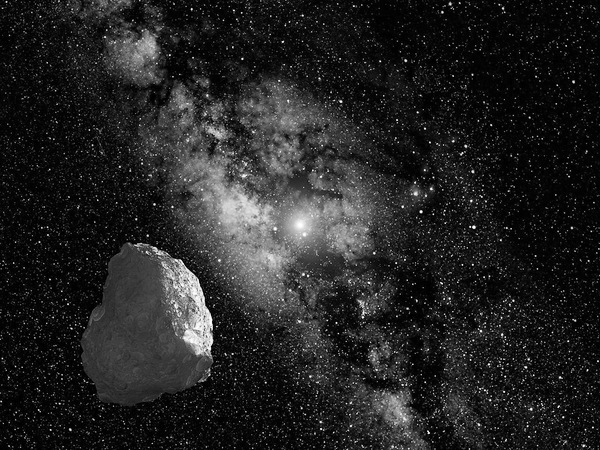Astronomers say ‘Planet Nine’ likely exists near Kuiper Belt

An artist’s interpretation of the Kuiper Belt Object.
A group of astronomers discovered in 2016 evidence of a possible ninth planet in the Milky Way. According to Gizmodo, the planet formerly labelled as “Planet X” is now known internationally by the name “Planet Nine.”
While the exact location of this planet is unknown to scientists, they predict that it is most likely positioned in the outer reaches of our solar system.
This research came from Mike Brown and Konstantin Batygin, both astronomers at the California Institute of Technology. In 2016 Gizmodo labelled Mike Brown as “the guy who killed Pluto and is proud of it.”
Some of the evidence pointing towards the existence of a ninth planet in our solar system is the close clustering of objects in the Kuiper Belt, a large circumstellar disc in the outer region of the Solar System.
According to ExtremeTech, the research of Mike Brown and Konstantin Batygin indicated that Pluto was one of the first Kuiper Belt Objects that was discovered.
In fact, Brown and Batygin created a map showing where they expect the planet to be.
In one of the images, the authors displayed a Mollweide projection — a map of the entire solar system, with lines of latitude and longitude and meridians represented by elliptical curves — mapped to an ellipse.
In the 1840s, Neptune was discovered when a group of astronomers led by John Couch Adams and Urbain Le Verrier noticed that Uranus was being dragged by an unseen object. Something similar is happening now with the Kuiper Belt Objects, which seem to be clustered in the same region of space as Uranus once was.
Some scientists believe this to only be a ring of debris large enough to impact the gravitational effects in a way similar to that of a planet. Others think that this supposed “Planet Nine” is actually a primordial black hole, one that is too small to be seen with modern technological methods.
However, according to Scitechdaily, there is only a 0.4% chance that the evidence is just based on biased data.
In fact, a statement by the members of Brown and Batygin’s team, made it clear that there is strong evidence supporting the existence of another planet.
“Despite recent discussions, statistical evidence for clustering in the outer solar system remains strong, and a massive planet on a distant inclined eccentric orbit remains the simplest hypothesis,” the team stated.
To determine if “Planet Nine” really does exist, astronomers are focusing their research on a selection of debris in the Kuiper Belt to determine the mass, orbit, and gravitational influence of the planet.
Additionally, it is much harder to determine if Planet Nine actually exists because of its distance from the sun. According to News 18, the planet is 300 times the distance from the sun to the earth.
In a statement posted on his blog, Brown addressed the discovery.
“We couldn’t really give a range of uncertainties for where in the sky Planet Nine might be, how massive it might be,” Brown stated. “Now we can.”
The map created by Brown and Batygin shows a rough estimate of where the planet should be, but not where it actually is.
Brown spoke on this issue in a post on Twitter, as well.
“Sadly, the data only tells us the orbital path, not where in the orbital path it is (very sadly, actually),” Brown stated. “It is more likely to be at its most distant point from the sun, but only because it travels more slowly there. But this is where you should be looking.”
Based on the information relating to the Kuiper Belt and the map drawn out by Brown and Batygin, there is a chance that the planet is actually a lot closer than originally thought.
In a study, Batygin and Brown explained that the planet orbits the sun in 7,400 Earth years, instead of the 18,500 Earth-year orbital period that they originally placed it at.
The research done by this team and other scientists has made it possible to speed up the discovery process.
Brown and Batygin stated that the planet could possibly be discovered within the next two years.
Gabriella Brady is a junior from Pittsburgh, Pennsylvania. She is a Biology and Neuroscience double major and German minor. This is her second year on...








